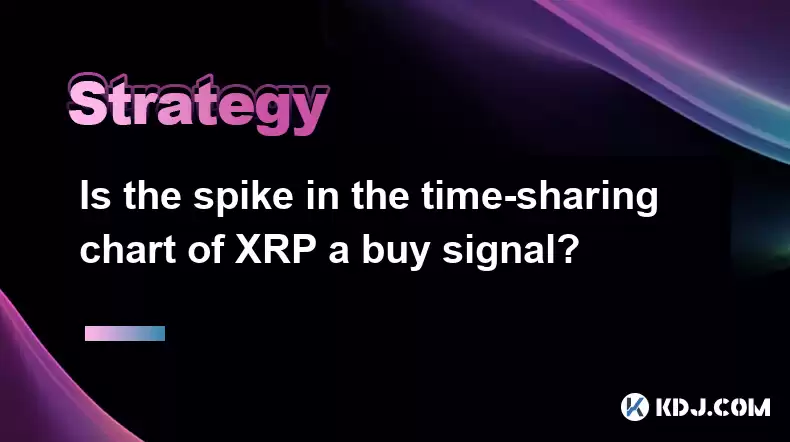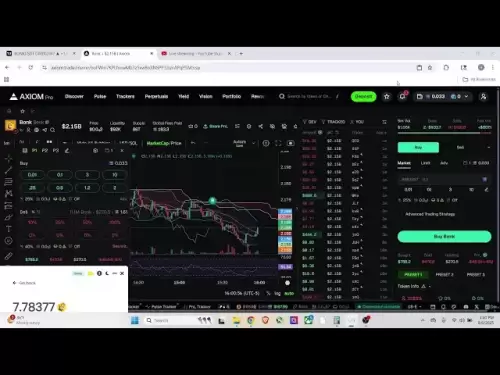-
 Bitcoin
Bitcoin $116700
2.16% -
 Ethereum
Ethereum $3830
5.76% -
 XRP
XRP $3.082
4.56% -
 Tether USDt
Tether USDt $1.000
0.04% -
 BNB
BNB $777.8
1.96% -
 Solana
Solana $173.2
5.46% -
 USDC
USDC $0.0000
0.02% -
 Dogecoin
Dogecoin $0.2146
6.85% -
 TRON
TRON $0.3384
0.92% -
 Cardano
Cardano $0.7676
5.51% -
 Hyperliquid
Hyperliquid $39.28
4.90% -
 Sui
Sui $3.723
9.07% -
 Stellar
Stellar $0.4164
6.32% -
 Chainlink
Chainlink $17.36
5.78% -
 Bitcoin Cash
Bitcoin Cash $580.9
3.62% -
 Hedera
Hedera $0.2544
5.50% -
 Ethena USDe
Ethena USDe $1.001
0.02% -
 Avalanche
Avalanche $22.81
3.81% -
 Litecoin
Litecoin $120.8
3.60% -
 UNUS SED LEO
UNUS SED LEO $8.956
-0.35% -
 Toncoin
Toncoin $3.311
4.28% -
 Shiba Inu
Shiba Inu $0.00001266
4.15% -
 Uniswap
Uniswap $10.10
5.97% -
 Polkadot
Polkadot $3.786
4.80% -
 Dai
Dai $1.000
0.01% -
 Monero
Monero $280.4
-4.02% -
 Bitget Token
Bitget Token $4.405
1.69% -
 Cronos
Cronos $0.1480
5.13% -
 Pepe
Pepe $0.00001087
5.67% -
 Ethena
Ethena $0.6348
11.62%
Is the spike in the time-sharing chart of XRP a buy signal?
A spike in XRP's time-sharing chart may signal a buy if it aligns with an upward trend, high volume, and positive technical indicators like moving averages and RSI.
Apr 20, 2025 at 01:21 pm

Analyzing the time-sharing chart of XRP can be an essential part of making trading decisions. When you notice a spike on the chart, it's natural to wonder whether this indicates a buy signal. To determine this, it's crucial to understand what a spike represents, the context surrounding it, and other technical indicators that could influence your decision. Let's delve into the intricacies of XRP's time-sharing chart and explore whether a spike should prompt you to buy.
Understanding Spikes on Time-Sharing Charts
A spike on a time-sharing chart indicates a sudden and significant change in price within a short period. This can be either an upward or downward movement. When you see a spike, it often means that there has been a burst of trading activity, possibly driven by news, market sentiment, or large trades by whales. However, not all spikes are created equal, and their significance can vary based on the context.
Contextual Analysis of XRP Spikes
To determine if a spike in XRP's time-sharing chart is a buy signal, you need to consider the context. Is the spike part of a larger trend? If the spike aligns with an overall upward trend, it might indicate continued bullish momentum. Conversely, if it appears as an anomaly in a bearish trend, it might be a false signal or a temporary fluctuation.
Additionally, consider the volume accompanying the spike. A spike with high trading volume is generally more significant than one with low volume. High volume suggests strong interest and commitment from traders, which could reinforce the validity of the spike as a buy signal.
Technical Indicators to Confirm Buy Signals
While a spike can be an exciting signal, it's wise to use other technical indicators to confirm whether it's a good time to buy. Some useful indicators include:
- Moving Averages: If the spike occurs above key moving averages (like the 50-day or 200-day), it might indicate a stronger buy signal.
- Relative Strength Index (RSI): An RSI below 70 suggests that the asset is not overbought, and a spike in this context might be a better buy signal.
- MACD (Moving Average Convergence Divergence): A bullish crossover in the MACD can support the spike as a buy signal.
Market Sentiment and News
Market sentiment and news can greatly influence the validity of a spike as a buy signal. Positive news about XRP, such as regulatory advancements or partnerships, can drive a spike and make it a more reliable buy signal. Conversely, negative news or regulatory setbacks can lead to spikes that are better avoided.
It's crucial to stay updated with the latest news and sentiment around XRP. Platforms like Twitter, Reddit, and dedicated cryptocurrency news sites can provide real-time insights into what's driving the market.
Risk Management and Entry Points
Even if a spike in XRP's time-sharing chart appears to be a buy signal, it's essential to consider risk management. Determine your entry point carefully. If the spike is too high, you might want to wait for a pullback to a more favorable price before entering the trade.
Additionally, set stop-loss orders to protect your investment. A common strategy is to place a stop-loss just below the recent low before the spike. This way, if the price reverses, your losses will be minimized.
Practical Steps to Analyze a Spike
When you see a spike on XRP's time-sharing chart, follow these steps to determine if it's a buy signal:
- Check the overall trend: Look at the longer-term chart to see if the spike aligns with an upward trend.
- Analyze the volume: Ensure the spike is accompanied by high trading volume.
- Use technical indicators: Confirm the spike with moving averages, RSI, and MACD.
- Consider market sentiment and news: Stay updated with the latest developments that might influence XRP's price.
- Determine your entry point: Decide if you should buy at the peak of the spike or wait for a pullback.
- Set a stop-loss: Protect your investment by setting a stop-loss just below the recent low.
Frequently Asked Questions
Q: Can a spike in XRP's time-sharing chart be a sell signal instead of a buy signal?
A: Yes, a spike can also be a sell signal, especially if it occurs in a bearish trend or if it's accompanied by negative news. It's important to analyze the context and use technical indicators to determine the nature of the spike.
Q: How quickly should I act on a spike in XRP's chart?
A: The speed of your action depends on your trading strategy. If you're a day trader, you might want to act quickly to capitalize on short-term movements. If you're a long-term investor, you might take more time to analyze the spike and confirm it with other indicators.
Q: Are there any tools that can help me identify spikes more effectively?
A: Yes, there are several tools and platforms that can help you identify spikes more effectively. TradingView, for example, offers customizable charts and real-time data that can highlight spikes and other price movements.
Q: How can I differentiate between a genuine spike and a false signal?
A: Differentiating between a genuine spike and a false signal involves looking at the overall trend, trading volume, and using technical indicators. A genuine spike is typically supported by high volume and aligns with other bullish indicators, while a false signal might lack volume and contradict other market signals.
Disclaimer:info@kdj.com
The information provided is not trading advice. kdj.com does not assume any responsibility for any investments made based on the information provided in this article. Cryptocurrencies are highly volatile and it is highly recommended that you invest with caution after thorough research!
If you believe that the content used on this website infringes your copyright, please contact us immediately (info@kdj.com) and we will delete it promptly.
- Ollama Turbo & GPT-OSS: Revolutionizing AI Model Accessibility and Speed
- 2025-08-07 20:29:33
- Bitcoin Ordinals: NFTs Evolving Bitcoin or a Fleeting Fad?
- 2025-08-07 20:29:33
- BlockchainFX, Bitcoin Swift, Crypto Presales: What's the Hype?
- 2025-08-07 19:10:13
- Pepe Dollar (PEPD) vs. SPX6900: The Meme Coin Battle of 2025
- 2025-08-07 19:50:12
- XRP Investment Regret: Are You Missing Out on the Next Big Thing?
- 2025-08-07 19:50:12
- XRPINU: More Than Just a Meme? Roadmap, Liquidity, and the Future of Funny Money
- 2025-08-07 19:56:46
Related knowledge

How to avoid common crypto investment mistakes?
Jul 13,2025 at 01:35am
Understanding the Risks of Crypto InvestmentInvesting in cryptocurrency can be highly rewarding, but it also comes with significant risks. One of the ...

What is a long-short crypto strategy?
Jul 15,2025 at 10:56am
Understanding the Basics of a Long-Short Crypto StrategyA long-short crypto strategy is an investment approach where traders simultaneously take long ...

What is a long-short crypto strategy?
Jul 11,2025 at 01:28pm
Understanding the Basics of Long-Short Crypto StrategyA long-short crypto strategy is an investment approach where traders take both long and short po...

How to use the RSI indicator for crypto?
Jul 12,2025 at 03:56pm
Understanding the RSI Indicator in Cryptocurrency TradingThe Relative Strength Index (RSI) is a momentum oscillator used to measure the speed and chan...

Is copy trading a good strategy for crypto beginners?
Jul 12,2025 at 08:28am
Understanding Copy Trading in the Cryptocurrency MarketCopy trading is a strategy where novice traders replicate the trades of experienced investors a...

How to build a crypto portfolio with $1000?
Jul 13,2025 at 08:14pm
Understanding the Basics of Cryptocurrency InvestmentBuilding a crypto portfolio with $1000 starts with understanding the fundamentals of cryptocurren...

How to avoid common crypto investment mistakes?
Jul 13,2025 at 01:35am
Understanding the Risks of Crypto InvestmentInvesting in cryptocurrency can be highly rewarding, but it also comes with significant risks. One of the ...

What is a long-short crypto strategy?
Jul 15,2025 at 10:56am
Understanding the Basics of a Long-Short Crypto StrategyA long-short crypto strategy is an investment approach where traders simultaneously take long ...

What is a long-short crypto strategy?
Jul 11,2025 at 01:28pm
Understanding the Basics of Long-Short Crypto StrategyA long-short crypto strategy is an investment approach where traders take both long and short po...

How to use the RSI indicator for crypto?
Jul 12,2025 at 03:56pm
Understanding the RSI Indicator in Cryptocurrency TradingThe Relative Strength Index (RSI) is a momentum oscillator used to measure the speed and chan...

Is copy trading a good strategy for crypto beginners?
Jul 12,2025 at 08:28am
Understanding Copy Trading in the Cryptocurrency MarketCopy trading is a strategy where novice traders replicate the trades of experienced investors a...

How to build a crypto portfolio with $1000?
Jul 13,2025 at 08:14pm
Understanding the Basics of Cryptocurrency InvestmentBuilding a crypto portfolio with $1000 starts with understanding the fundamentals of cryptocurren...
See all articles

























































































